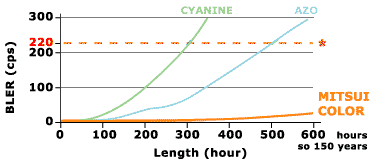Media Longevity
The shelf life or longevity of optical media refers to the time frame in which disc data can still be accessed without encountering loss or damage. Concrete lifespan numbers for discs are difficult to establish due to fluctuating environmental and physical factors that are open to individual interpretation.
In real world applications, the elements that affect a disc’s shelf life include: manufacturer’s materials and quality of assembly, user handling and storage, compatible hardware and other disc equipment, and exposure to heat, light, or humidity.

Phase changing tech for formats like the RW and RE (for Blu-ray, DVD, and CDs), will have a limited lifespan in the number of transitions it can endure between crystalline and amorphous (reading, writing, re-writing) states. The quality of dye employed in the recording layers of the R format impacts lifespan and depending on external variables, will break down at unique rates.
Some optical media manufacturers use Accelerated Life Testing (ALTs) to demonstrate the durability of their products. This testing can estimate a disc’s shelf life using a series of stress tests that can rapidly age media and calculate a real time shelf life quotient. There are discrepencies, however, regarding these tests as they do not test for every stress factor. Results can also be subjective.
The lifespan of a CD, DVD, and Blu-ray can be conservatively estimated:
- Unrecorded CD-R and CD-RW: 5-10 years
- Recorded CD-R: 50-200 years
- Recorded CD-RW: 20-100 years
- Recorded DVD-R: 30-100 years
- Recorded DVD-RW: up to 30 years
- Recorded BD-R and BD-RE: 30-200 years
Due to the hard coating utilized on them, Blue-ray media (BD) have better protection against elements compared with DVD formats.

